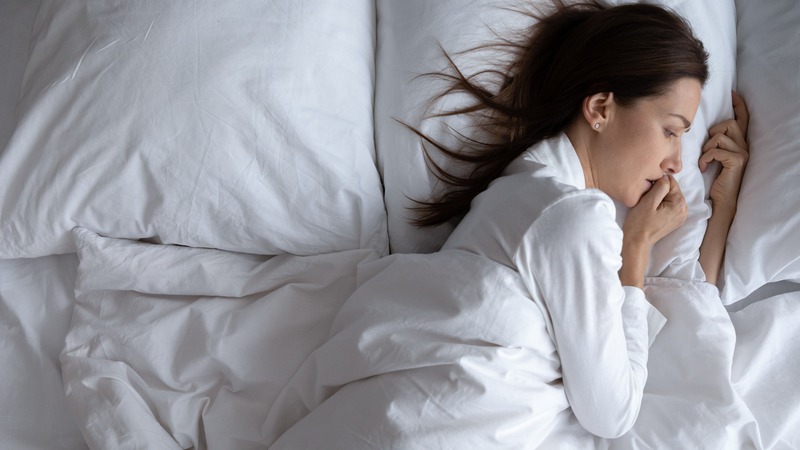Sleep apnea is a common condition that affects millions of people worldwide. It can lead to disrupted sleep, daytime fatigue, and other health issues. While various treatments are available, positional therapy has become a popular noninvasive method to help reduce sleep apnea symptoms. But what exactly is positional therapy, and how does it work to ease the discomfort and risks associated with sleep apnea? Let’s explore this easy and natural approach to managing sleep apnea symptoms.
What Is Positional Therapy?
Positional therapy is a treatment option for sleep apnea that involves adjusting the individual’s sleeping position to minimize airway obstruction. This method is particularly effective for those who experience positional obstructive sleep apnea, which occurs primarily when a person sleeps on their back, allowing gravity to pull the tongue and soft tissues backward, blocking the airway. By encouraging a side-sleeping position, positional therapy can significantly reduce the frequency and severity of apnea events during the night.
How Does Positional Therapy Work?
The primary goal of positional therapy is to prevent the sleeper from lying in positions that exacerbate their sleep apnea. This is typically accomplished through the use of special devices or techniques that promote side-sleeping. From pillows designed to support side-sleeping to wearable devices that gently vibrate when the sleeper turns onto their back, various tools are available to assist in maintaining the optimal sleeping position.
Devices Used in Positional Therapy
There are several products available that are designed specifically for positional therapy. Here are a few of the most common ones:
-
Specialty Pillows: These pillows encourage side-sleeping by providing comfortable support while preventing the user from rolling onto their back.
-
Wedge Pillows: By elevating the upper body, wedge pillows can encourage people to sleep in a slightly upright position, reducing the effects of gravity on the airway.
-
Positional Alarms: Wearable alarms detect when a sleeper turns onto their back and emit a gentle vibration to prompt them to return to a side position.
-
Body Positioners: Cushions or foam blocks that attach to the body, preventing the sleeper from rolling onto their back.
Benefits of Positional Therapy for Sleep Apnea
One of the most exciting aspects of positional therapy is its ability to reduce sleep apnea symptoms without the use of more invasive treatments, like surgery or mechanical devices. Here are some benefits:
-
Non-invasive: Positional therapy is a simple, non-surgical approach to managing sleep apnea symptoms.
-
Easy to implement: Many positional therapy devices are affordable and easy to incorporate into nightly routines.
-
Improved sleep quality: By minimizing apnea events, positional therapy can lead to a better night’s sleep.
-
Reduced health risks: Effective treatment of sleep apnea can reduce the risk of associated conditions, such as heart disease and hypertension.
Is Positional Therapy Right for You?
Before embarking on positional therapy, it’s essential to determine whether you have positional sleep apnea. A sleep study, often conducted in a sleep center or through at-home testing, can provide valuable insights into your sleep patterns and determine whether positional therapy might be effective for you. If you’re seeking sleep apnea solutions without CPAP, positional therapy may be worth exploring.
Consulting with Healthcare Professionals
Consulting with a healthcare provider is essential before starting positional therapy. A sleep specialist can provide a thorough evaluation and make personalized recommendations. If you’re in the Midwest, consulting a sleep apnea doctor in Kansas City could be a good starting point for expert advice and appropriate treatment options.
Combining Positional Therapy with Other Treatments
Positional therapy can be an effective standalone treatment, but it might be even more beneficial when combined with other strategies. Lifestyle changes, such as weight loss, exercise, and avoiding alcohol before bedtime, can enhance the effectiveness of positional therapy. In some cases, doctors may also recommend medical devices like a BIPAP machine to assist in breathing during sleep.
Troubleshooting Positional Therapy
Like any treatment, positional therapy may require some adjustment. Here are a few tips for overcoming common challenges:
-
Comfort Issues: If a positional device feels uncomfortable, try different models or brands until you find one that suits your needs.
-
Consistency is Key: Use the therapy regularly and as directed to experience the best results.
-
Combination Approaches: If positional therapy alone isn’t effective, consider using it alongside other treatments, as discussed with your healthcare provider.
Real-Life Experiences with Positional Therapy
Hearing from others can provide encouragement and motivation. Many individuals have found relief through positional therapy, reporting not only a reduction in apnea events but also an improvement in overall energy levels and daytime alertness. If you’re considering positional therapy, engaging with online forums or community groups dedicated to sleep apnea can offer valuable insights and support.
Key Takeaways on Positional Therapy
Positional therapy is a promising approach to managing sleep apnea symptoms, especially for those who experience sleep apnea predominantly when sleeping on their backs. Its non-invasive nature, ease of use, and potential health benefits make it an appealing option for many people seeking alternatives to traditional treatments. As always, it’s crucial to consult with a healthcare provider to ensure this is the right path for your personal health needs and to maintain ongoing support throughout your treatment journey.
Final Thoughts
Remember, every individual’s situation is unique, and finding the best way to manage sleep apnea requires a comprehensive look at all potential solutions, including positional therapy. With expert guidance and a bit of patience and experimentation, you can find a treatment plan that fits your lifestyle and significantly improves your quality of sleep and life.


